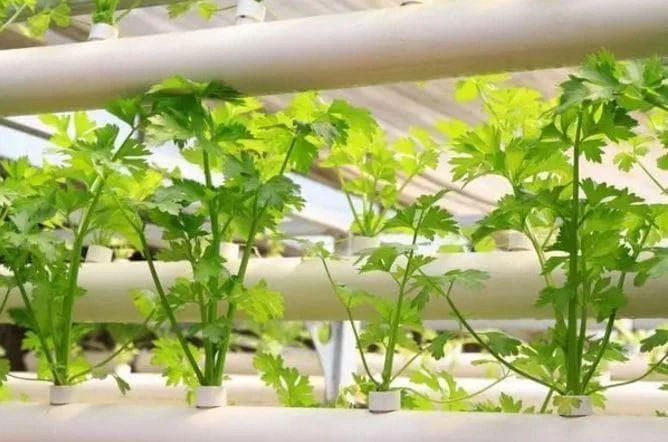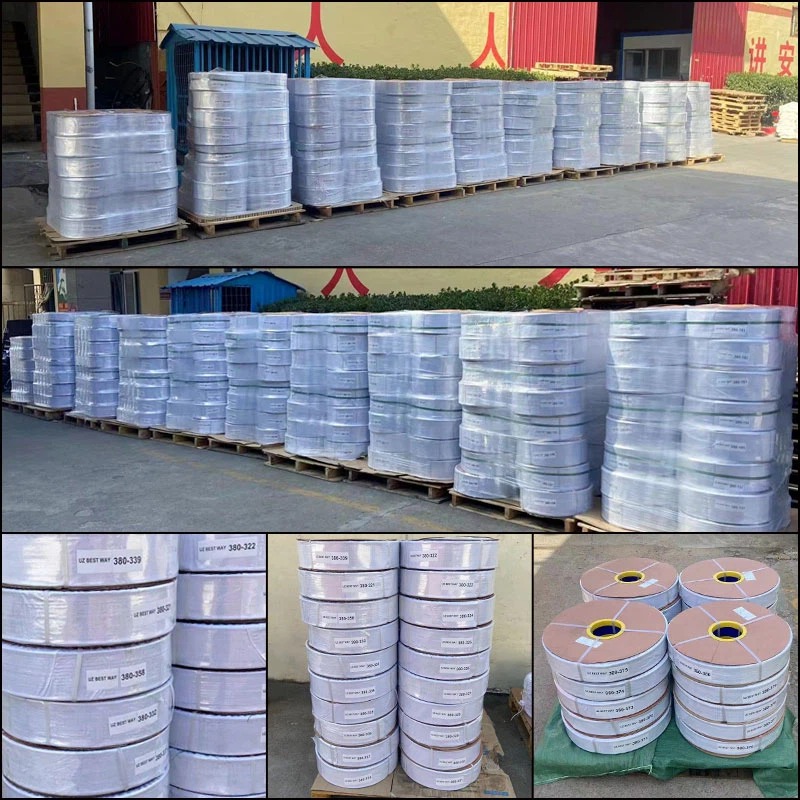Hydroponics Nutrient Solution Formula
Hydroponics is a cultivation method in which various nutrients required for plant growth and development are formulated into nutrient solutions for direct absorption and utilization by plants. Hydroponic growing can be divided into five types, namely hydroponics growing, sand cultivation method, substrate cultivation, mixed cultivation method and nutrient film cultivation, among which hydroponics and substrate cultivation method are the most commonly used. Soilless cultivation is not limited by conditions, as long as there is air and water, this technology can be used to cultivate vegetables.

The nutrient elements of the nutrient solution are composed of more than ten kinds of constant and trace elements such as nitrogen, phosphorus, potassium, calcium, iron, magnesium, sulfur, boron, zinc, copper, molybdenum and chlorine, which exist in the form of salt. However, when plants absorb nutrients, they do not absorb salt molecules, but the related ions.
Fertilizer Selection For Formulating Nutrient Solution
The composition of the nutrient solution includes the mineral nutrients necessary for crop growth. What kind of fertilizer is used to provide these nutrients is the first consideration when preparing the nutrient solution.
Since the nutrient supply of protected cultivation is drip irrigation into the substrate through the full price nutrient solution, the plant root system absorbs water and nutrients from the substrate. Therefore, there must be no precipitation in the nutrient solution, there must be a suitable pH, and no chemical reactions can occur between the components.
Therefore, comprehensively considering the solubility, pH, stability of the fertilizer, the secondary components brought in, price and other factors, it is determined that the nitrogen source is mainly urea and calcium nitrate, and potassium nitrate is supplemented. Potassium dihydrogen phosphate and phosphoric acid are preferred sources of phosphorus. The potassium source is mainly potassium sulfate, supplemented by potassium nitrate. The calcium is provided by calcium nitrate, the source of magnesium is magnesium sulfate, and the source of iron is chelated iron. The chemical properties of copper, zinc, manganese, boron, molybdenum, and chlorine are relatively stable, among which the sulfates of copper, zinc, and manganese have good solubility, and sulfur is also required by plants, so sulfates are generally used. Borax is used for boron, and sodium molybdate is used for molybdenum. The need for chlorine is very small, and the chlorine in the water source is basically enough.
Common Vegetable Soilless Cultivation Nutrient Solution Formulas
When making soilless culture nutrient solution, different crops require different fertilizer conditions, and thus the formula of nutrient solution is also different. Several nutrient solution formulas are listed below, and the formula can be selected according to the needs or used as a reference.
1. Formulation of horticultural balanced nutrient solution (dosage unit mg/L): calcium nitrate 950, potassium nitrate 810, magnesium sulfate 500, ammonium dihydrogen phosphate 155, EDTA iron sodium salt 15-25, boric acid 3, manganese sulfate 2, zinc sulfate 0.22, copper sulfate 0.05, sodium molybdate or ammonium molybdate 0.02.
2. Tomato nutrient solution formula (dosage unit mg/L):
Formula 1 (Netherlands Greenhouse Horticultural Research Institute) Calcium nitrate 1216, Ammonium nitrate 42.1, Potassium dihydrogen phosphate 208, Potassium sulfate 393, Potassium nitrate 395, Magnesium sulfate 466;
Formula 2 (Chen Zhende, etc.) urea 427, diammonium phosphate 600, potassium dihydrogen phosphate 437, potassium sulfate 670, magnesium sulfate 500, EDTA iron sodium salt 6.44, manganese sulfate 1.72, zinc sulfate 1.46, boric acid 2.38, copper sulfate 0.20, molybdenum Sodium acid 0.13;
Formula 3 (Shandong Agricultural University) calcium nitrate 590, potassium nitrate 606, magnesium sulfate 492, superphosphate 680.
3. Cucumber nutrient solution formula (Shandong Agricultural University, dosage unit mg/L): calcium nitrate 900, potassium nitrate 810, magnesium sulfate 500, superphosphate 840.
4. Watermelon nutrient solution formula (Shandong Agricultural University, dosage unit mg/L): calcium nitrate 1000, potassium nitrate 300, magnesium sulfate 250, superphosphate 250, potassium sulfate 120.
5. Green leafy vegetable nutrient solution formula (dosage unit: mg/L): calcium nitrate 1260, potassium sulfate 250, potassium dihydrogen phosphate 350, magnesium sulfate 537, ammonium sulfate 237.
6. Lettuce nutrient solution formula (dosage unit: mg/L): calcium nitrate 658, potassium nitrate 550, calcium sulfate 78, ammonium sulfate 237, magnesium sulfate 537, monocalcium phosphate 589.
7. Formula of celery nutrient solution (dosage unit mg/L):
Formula 1, magnesium sulfate 752, monocalcium phosphate 24, potassium sulfate 500, sodium nitrate 644, calcium sulfate 337, potassium dihydrogen phosphate 175, sodium chloride 156;
Formula 2 (Wang Xuejun) calcium nitrate 295, potassium sulfate 404, double superphosphate 725, calcium sulfate 123, magnesium sulfate 492.
8. Eggplant nutrient solution formula (amount in mg/L): calcium nitrate 354, potassium sulfate 708, ammonium dihydrogen phosphate 115, magnesium sulfate 246.
9. Dosage of trace elements (common for all formulations): 20-40 ferrous sodium salt of EDTA, 15 ferrous sulfate, 2.86 boric acid, 4.5 borax, 2.13 manganese sulfate, 0.05 copper sulfate, and 0.22 zinc sulfate.
The above formula is the proportion of nutrients that should be contained in the nutrient solution when the crops are planted in the form of soilless culture, when the seedlings grow into plants. When raising seedlings, this nutrient ratio can also be used, but the concentration of the nutrient solution should be reduced appropriately to prevent the normal growth of the seedlings from being affected by too much salt in the substrate, and the leaf surface of the seedlings will be easily damaged when the evaporation is too large.
Problems To Be Paid Attention To When Preparing Nutrient Solution
1. When preparing nutrient solution, avoid using metal containers, let alone use it to store nutrient solution. It is better to use glass, enamel, and ceramic containers.
2. The water problem of nutrient solution: natural rainwater is the safest water source, but the rainwater received from the greenhouse using PVC film is affected by the plasticizer phthalate; the rainwater received from the glass greenhouse is likely to cause boron excess disease. Well water contains a lot of chlorine, calcium, iron, magnesium, and trace elements such as zinc, copper, and molybdenum. It is necessary to analyze the content of elements in the water in advance to determine the appropriate increase or decrease when preparing the nutrient solution. When tap water and river water are used, reproductive obstacles are often caused by residual chlorine and herbicides mixed in. In particular, tap water has not been dechlorinated, and residual chlorine will cause vegetable root rot. When the nutrient solution such as river water, well water, and tap water contains excessive salt, it can be removed by distillation, ion exchange, or electrodialysis. It is more economical to use rainwater instead.
How To Adjust The PH Value Of The Nutrient Solution
The pH of the nutrient solution directly affects the state, transformation and availability of nutrients in the nutrient solution. For example, phosphate is prone to precipitation when it is alkaline, which affects its utilization; manganese, iron, etc. will also be deficient due to the decrease in solubility in alkaline solution. Therefore, the adjustment of the pH value in the nutrient solution cannot be ignored.
The pH value can be determined by the mixed indicator colorimetric method, and the pH value of the nutrient solution can be determined according to the characteristics of the indicator showing different colors in the nutrient solution with different pH values. The nutrient solution is generally prepared with well water or tap water. If the pH value of the water source is neutral or slightly alkaline, the pH value of the prepared nutrient solution is similar to that of the water source, and if it does not match, it needs to be adjusted.
When adjusting the pH value, first dilute strong acid and strong alkali with water (use phosphoric acid or sulfuric acid to neutralize when the nutrient solution is too alkaline, and use sodium hydroxide to neutralize when it is too acidic), and then add it to the nutrient solution drop by drop. At the same time, continue to measure with pH test paper until it is neutral.




